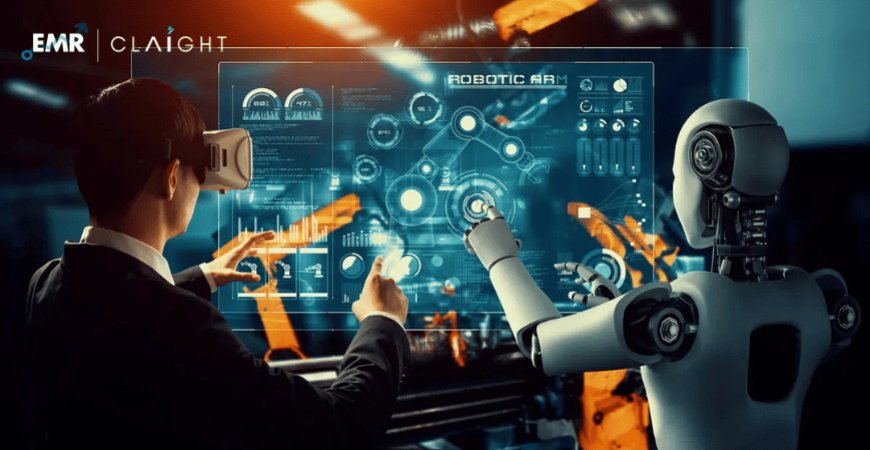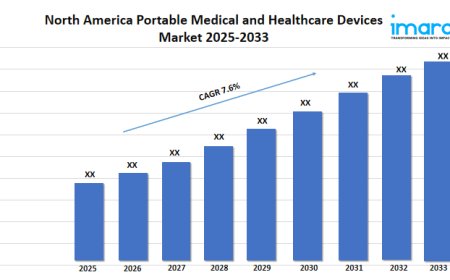Reimagining the Future: The Power of Robotics in Daily Life
One of the most significant shifts in the robotics landscape is the emergence of collaborative robots, or "cobots."

Once a fantasy of science fiction, robots have now become a functional part of our modern reality. From industrial automation to domestic assistance, robotic technology is reshaping the way we live, work, and think. What was once considered futuristic is now commonplaceautomated arms on assembly lines, AI-powered delivery bots in hospitals, or robotic vacuums mapping out homes.
We are not just witnessing an era of technological enhancement; we are part of a transformation thats bridging the gap between human potential and mechanical precision. Robotics is more than a trendits a technological revolution that is fundamentally redefining efficiency, safety, and innovation across nearly every domain.
Expert Market Research: Unfolding the Robotics Revolution
According to Expert Market Research, the robotics market is growing rapidly, driven by escalating demand for intelligent automation across industries such as healthcare, agriculture, logistics, and defense. This growth is not only transforming large-scale manufacturing operations but is also influencing daily lives through service robots and assistive technologies. From enhancing workplace productivity to supporting critical care, robotics is proving to be more than a toolits becoming a partner in progress. The future promises even more integration, as advancements in AI and machine learning continue to enhance the scope and versatility of robotic systems.
Humanizing Machines: The Rise of Collaborative Robotics
One of the most significant shifts in the robotics landscape is the emergence of collaborative robots, or "cobots." These machines are designed to work side by side with humans, not replace them. In contrast to traditional robots confined within safety cages, cobots are lightweight, flexible, and adaptive. Theyre found in warehouses, small manufacturing units, and even research labswherever repetitive precision meets human decision-making.
Cobots are bridging the emotional and functional divide between humans and machines. By understanding context, responding to voice commands, and learning from their environment, they are making human-robot collaboration not just possible but productive.
Smarter Homes, Smarter Lives
Home automation has entered a new era with robotics taking center stage. From robotic vacuum cleaners that learn floor layouts to AI-enabled kitchen assistants that can prepare meals, technology is becoming more personal and intuitive.
These smart devices arent just about conveniencetheyre about quality of life. Think of elderly care robots that offer companionship and monitor vital signs, or robotic exoskeletons that assist people with mobility challenges. These solutions are creating safer, more inclusive living environments, where independence doesn't come at the cost of support.
Robots in Healthcare: A Helping Hand That Saves Lives
Few sectors illustrate the potential of robotics like healthcare. Precision surgery, robotic rehabilitation, automated diagnostics, and patient transport are now becoming essential components in hospitals. Surgeons can operate with higher accuracy through robotic-assisted systems, while nursing bots can assist with routine check-ups and medication schedules.
This is especially vital in scenarios where human fatigue or risk of infection could compromise outcomes. Robots dont tire, and they dont make decisions based on emotionthey operate based on data, protocols, and precision. In times of crisis, like pandemics, they serve on the frontlines without putting lives at risk.
Agriculture Gets a High-Tech Makeover
Beyond cities and hospitals, robotics is making waves in the fieldsliterally. With the agricultural sector facing labor shortages and increasing demand, agricultural robots are revolutionizing farming. Automated tractors, drone-mounted seed planters, and robotic fruit pickers are becoming more common.
These innovations not only enhance productivity but also reduce environmental impact. Robots can analyze soil, target weeds precisely, and minimize pesticide use. This makes modern agriculture not just more efficient, but more sustainable.
Learning Through the Machine Lens
The education sector is also getting a robotics upgrade. Educational robots are now used to teach coding, mathematics, and even empathy to students. These tools are designed to be interactive and intuitive, making learning engaging and accessible.
From STEM classrooms to special education, robotics is promoting hands-on experience and adaptive learning. Children aren't just consuming knowledgetheyre building, programming, and interacting with robots, cultivating a new generation of problem-solvers who think creatively and computationally.
Robotics and Creativity: When Art Meets Code
Believe it or not, robots are dabbling in the arts. Whether it's robotic arms painting abstract canvases, humanoids composing music, or AI-driven systems writing scripts, technology is expanding the boundaries of creativity.
While machines may not feel emotions, they can be programmed to replicate aesthetic sensibilities, leading to intriguing collaborations between human imagination and algorithmic precision. This interplay is not about replacing the artist but about amplifying creativity through an entirely new medium.
The Future Isnt ComingIts Already Here
Robotics is not a distant promise; its a present reality. These intelligent machines are embedded in our homes, industries, hospitals, and classroomschanging whats possible every single day. What makes robotics truly exciting is its endless adaptability. As technology progresses, robots will become more intuitive, more human-aware, and more deeply integrated into our daily lives.
As we embrace this robotic renaissance, we are not just building machineswere building a smarter, safer, and more efficient world. The question is no longer whether robots will impact our lives, but how profoundly they already are.







































